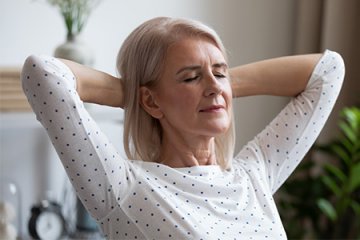15.09.2020
Bedwetting - what can it mean?
What is bedwetting?
Nocturnal enuresis, commonly known as bedwetting, is when a child that can control their bladder during the day experiences involuntary urination while asleep. In most cases, if the problem persists past the age of 5 it is considered a medical condition. If bedwetting happens less than 3 times a week, it is most likely considered primary nocturnal enuresis.
Whom may bedwetting concern?
Bedwetting is common in children. Other than allergies, it is the most common childhood chronic health issue. Bedwetting is seen more often in boys than girls and may pass with age.
Bedwetting
- Primary enuresis – connected with child’s inborn ailments and disorders.
- Secondary enuresis – reverting to night-time wetting after at least 6 months of staying dry.
|
- Monosymptomatic – a single dysfunction.
- Polysymptomatic – occurs with other symptoms such as bladder instability, urgency or polyuria.
|
What causes bedwetting?
Childhood bedwetting may be caused by the following:
- Genetics – the latest research shows that bedwetting has a strong genetic component. Scientists have isolated a gene that is responsible for bedwetting and discovered that it is hereditary. The probability that a child will wet the bed is much higher if one or both parents were bedwetters;
- Daily Urine Production Cycle Disorder – instead of reducing urine production at night, it is increased. This relates to diminished production of vasopressin, the hormone responsible for regulating the cycle;
- Wake Up Disorder – Due to a developmental delay, the child’s brain doesn’t relay the need to urinate in time (or at all). The child doesn’t wake up and therefore wets the bed in their sleep;
- Spinal Cord or Head Injuries;
- Sleep Apnea;
- Traumatic Episodes in the child’s life, psychological problems, or fear.
Bedwetting isn’t only a physiological issue; it can be a psychological one as well. A child who wets the bed may become more and more frustrated and find it hard to understand what is happening. The problem can be more distressing as the child grows older. What can be done about this?
Diagnosis and treatment
Children with urinary incontinence should be examined by a doctor. There are specific tests that can help make a proper diagnosis. Bedwetting can be caused by curable conditions, resolving the issue completely.
Diagnostic tests may include:
- A general physical examination and urinalysis
- Blood tests including levels of creatinine, sodium, and potassium
- Assessment of urine volume produced during the night and day
- Analysis of the child’s urinary diary
- Ultrasound scan of the abdomen with an evaluation of how much urine stays in the bladder after urination.
The doctor should explain the reasons for bedwetting to the child and their parents and discuss possible treatments. It is important that the child understands and accepts the suggested treatment: the more the child cooperates with their parents and doctor, the better chance there is for reducing or eliminating the bedwetting episodes.
What Might the Doctor Suggest?
1. Non-pharmacological treatment
The most common treatment is bladder control training, first during the day and then at night. The training may last up to a few weeks.
- Motivational treatment – reward the child for every dry night and completely withdraw from punishment should an accident happen. The child should help with cleaning the bed in the morning, but not as punishment. They should understand this as a natural consequence of a bedwetting episode. Limit the use of briefs as they can be anti-motivational.
- Drinking less fluids in the evenings and visiting the toilet just before getting into bed.
- Frequent, regular bladder voiding in cases of daytime incontinence.
- Reminding the child to go to the toilet.
- Using a bedwetting alarm, which wakes the child to remind them to urinate. The aim of using this method is to train the child to get through the night without urinating.
2. Pharmacological treatment
These treatments might take up to a few months. Medication is aimed at one of the following targets:
- Decreasing the volume of urine produced at night.
- Increasing bladder volume.
- Making the child sleep more lightly, so they can wake up to urinate.
If the number of wet nights is decreased by 90%, the treatment is considered successful.
Learn what you can do to help your child here.



